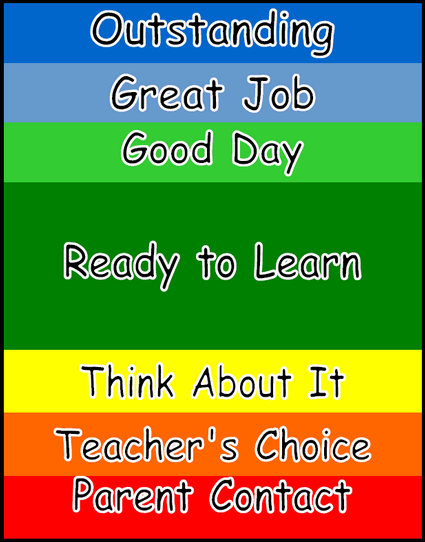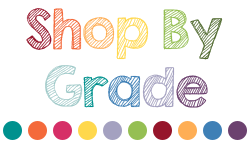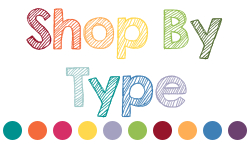

Recently, I wrote a post detailing my dislike for those color-coded behavior clip charts that dominate the land of Pinterest and teacher blogs. Sure, they’re cute, they’re easy, and they change behavior, but they also undermine respect and dignity, humiliate students, and strain relationships.
I promised during my last post that I would provide some alternatives to help manage behavior while encouraging learning that doesn’t involve public reprimands, so here goes, but first I want to get a few things straight!
 1. Extrinsic motivation is not the enemy. The argument a lot of people use against many different types of reward systems is that it encourages students to work for “things” rather than that “feel good feeling.” And while this can be true, I want to offer a thought. Adults are extrinsically motivated too. If you were to ask 100 adults why they work, I guarantee that one of the top reasons would be because they earn a paycheck. Sure, many adults works also primarily because they feel a sense of pride, feel like they’re making a difference, or changing the world, but if there was no paycheck attached I’m assuming that a great majority of the world would be unemployed. And when was the last time you used your own paycheck to buy “feel good feelings?” I used to hate it when my mom asked me to do something “because I would feel good about it.” So while intrinsic motivation is awesome, extrinsic motivation can be very beneficial to. It just shouldn’t be the only motivation.
1. Extrinsic motivation is not the enemy. The argument a lot of people use against many different types of reward systems is that it encourages students to work for “things” rather than that “feel good feeling.” And while this can be true, I want to offer a thought. Adults are extrinsically motivated too. If you were to ask 100 adults why they work, I guarantee that one of the top reasons would be because they earn a paycheck. Sure, many adults works also primarily because they feel a sense of pride, feel like they’re making a difference, or changing the world, but if there was no paycheck attached I’m assuming that a great majority of the world would be unemployed. And when was the last time you used your own paycheck to buy “feel good feelings?” I used to hate it when my mom asked me to do something “because I would feel good about it.” So while intrinsic motivation is awesome, extrinsic motivation can be very beneficial to. It just shouldn’t be the only motivation.
2. Not every technique or strategy will work for every kid. Sure as the sun shines, there’s always going to be those 1 or 2 kids that are just going to have a rough time. For kids with lots of defiance, check out my previous post for some suggestions. For some kids, more individualized behavior plans or IEP’s may need to be developed to meet their needs. More specifically, some kids may have a much harder time developing intrinsic motivation and need exclusively tangible rewards…some students with severe Autism or cognitive impairments, for example.
All right…onto the good stuff! Here are alternatives to the rainbow rocket-ship, pirate-themed, or flower behavior clip charts.
Have Students Manage Their Own System
This gives them ownership! It can be as simple as giving them punch cards at their desk that you periodically punch throughout the day for turning in work, sitting quietly, not getting discipline referrals during the day, etc. Or, it might be a pouch of tickets they keep to earn tickets. One of the really cool things I’ve seen teachers do with the tickets is having a weekly or monthly reward time during which kids can spend their tickets or punches on various activities. More popular activities like iPods might be more expensive, whereas less “in-demand” activities are less expensive. Either way, all students participate. It’s just that the better-behaved ones during the week get more choices as to what activities they’re able to do! Really want to use color-coded? Just have the kids keep a card at their desk in a private location that you can quietly go over and trade for a different colored card. At the end of the week, each color corresponds to a point value, which determines how much “money” they have to spend on activities.
Make Your Classroom Resemble the Real World
The main purpose for education is to prepare kids for the world after school, right? So why on Earth are we having kids move clips on a chart when they’re never in their entire life going to be moving clips or being a certain color for their behavior? Hopefully, we’ll get a job and work for money and earn bonuses for good work (unless they work in schools, of course!) So the most effective way to prepare kids for this type of system is to make your classroom some type of token economy like the real world is!
 Use A Variety of Reinforcers
Use A Variety of Reinforcers
Kids are motivated by food, others by certain activities, some by “stuff,” but everyone is motivated by CHOICE. And yes, I’m well aware about the restrictions being placed on food and school setting as well as the various dietary restrictions and needs of students. So if there issues surrounding food in your classroom don’t use it as a reinforcer! For tangible reinforcers, go spend $2 to buy a bunch of colorful pencils at a teacher discount store instead (or get them to donate – many will!) I’ve also seen teachers allow students to wear hats Friday, earn a homework pass, be able to spend time in the classroom at the shoes off, or be allowed to use pen for the day. There’s a million different types of reinforcers, but the goal is to allow students to CHOOSE what they will be motivated by be it tangible, activity, or otherwise. In the spirit of aligning our behavior strategies with real world, when was the last time that your boss told you how you could spend your paycheck?
Keep It Private
Ultimately, the goal of any system should be to keep it as private as possible. No other student in the classroom should know how many points or how many tokens or how many punches a student has earned unless that student wants to tell others. The purpose of discipline should never be to humiliate or torment. Along with that, avoid disappointing in groups as much as possible. I love how in schools we send the worst behaving kids to the principal’s office or keep them out of recess all together, so they sit outside the office or on the side of the playground for hours each year commiserating together and forming an army against the adults in their lives. There’s a reason that in counseling school we are told not to put all of the people with behavior kinds of problems in a group together. Unless two students wronged each other and are mediating a conflict, disciplined students should not be put altogether. Have them each go “help a teacher” or do something productive somewhere in the school when possible. It makes them feel like they have a purpose, and keeps them from forming a coalition with other kids who have difficulty behaving.
Encourage Intrinsic Motivation Too
So far, I’ve talked a lot about strategies that encourage extrinsic motivation so here are some thoughts about developing intrinsic motivation because that is also crucial in the adult world:
- Keep all educational material relevant to students lives. One technique I saw recently was to have a “fact of the day” board in the classroom where students could submit interesting facts from some nonfiction source they found. Then, their fact and their name would be written on the board. What a great way to encourage students to read nonfiction while gaining peer and adult attention as a motivator!
- Provide choice – let students choose between different ways of demonstrating
 nowledge (a worksheet vs. “create your own” test vs. “tell your partner”). Choice helps students cater their own learning toward their interests while discovering and developing their own strengths. If doing this is too overwhelming for every assignment, just pick 1 day each week. After a year, you’ll have 36 days of differentiated instruction. After 3 years, you’ll have 108! Or…find a friend to each pick a day each week and you can get a differentiated year 2 or 3 times as fast!
nowledge (a worksheet vs. “create your own” test vs. “tell your partner”). Choice helps students cater their own learning toward their interests while discovering and developing their own strengths. If doing this is too overwhelming for every assignment, just pick 1 day each week. After a year, you’ll have 36 days of differentiated instruction. After 3 years, you’ll have 108! Or…find a friend to each pick a day each week and you can get a differentiated year 2 or 3 times as fast! - Focus on Relationships – authoritative teaching styles work best to increase student interest, enjoyment, and performance, just as authoritative leadership styles work best to improve employee productivity and happiness. Listen, give encouragement, and show empathy for students. You’d be surprised how much better behavior gets when students feel like you are their ally rather than their dictator. They WANT to work to impress you if they feel loved and cared for.
Fair is Not Equal
 We educational people live and breathe this fact almost every moment of every day. We differentiate, flex group, and we try to give every student exactly what they need. This is why we all look like post-apocalyptic zombies come the beginning of June! But what I mean by this is that the students have to know it too! I often use the Band-Aid analogy in that if a student came in with a broken arm, I wouldn’t give them a Band-Aid just because their classmate got a Band-Aid for a paper cut that morning. There are tons of visual lessons and demonstrations that can be used to teach this fact to kids and I highly recommend weaving it into every aspect of what you do in the classroom. Reminding kids that “I give every student what they need even though it’s not the same thing” is so important because as you and I know, when they get to the real world things are not the same for everyone. People earn giant promotions or get laid off, live in trailer parks or giant mansions, have 5 kids or suffer through infertility. Students will have so much more respect and trust for you if they know that they’re going to get what they need from you even if it’s not every other kid in the class needs.
We educational people live and breathe this fact almost every moment of every day. We differentiate, flex group, and we try to give every student exactly what they need. This is why we all look like post-apocalyptic zombies come the beginning of June! But what I mean by this is that the students have to know it too! I often use the Band-Aid analogy in that if a student came in with a broken arm, I wouldn’t give them a Band-Aid just because their classmate got a Band-Aid for a paper cut that morning. There are tons of visual lessons and demonstrations that can be used to teach this fact to kids and I highly recommend weaving it into every aspect of what you do in the classroom. Reminding kids that “I give every student what they need even though it’s not the same thing” is so important because as you and I know, when they get to the real world things are not the same for everyone. People earn giant promotions or get laid off, live in trailer parks or giant mansions, have 5 kids or suffer through infertility. Students will have so much more respect and trust for you if they know that they’re going to get what they need from you even if it’s not every other kid in the class needs.
Unfortunately, there’s no magic wand. There’s no “easy button.” There’s just a lot of hard work, long days, and undead-looking teachers by June. But in the end, it’s worth it. These kids are going to be running the world pretty soon and even though there are 7 or 8 now, they are just as important as you or I. And they have just as much dignity, worth, and value as any other person. I absolutely love the following quote: “Each child in your class is someone else’s whole world.” We need to always remember that.
“Yes, behavior charts can create a classroom full of raised hands, quiet voices, walking feet, please-and-thank-you’s. But a child’s dignity is too high a price to pay for criss-cross-applesauce.” Thank you for the reminder, Amy!








I feel a standing ovation coming on. Great points!
Glad you enjoyed them!
[…] ← Tips & Tricks :: Using Creativity to Help Others! Tips & Tricks :: Non-Color-Coded Behavior Management → […]
[…] not just what you THINK will work for them! I’ve written another post about rewards and behavior management […]